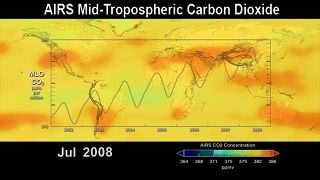Carbon Dioxide Emissions from Power Sources
Here’s a report on the amount of CO2 associated with various power sources. It’s not uncommon for the nuclear industry to seize upon reports like this, and say, “Ya see? We’re clean energy too.” Of course, that’s true, and I wouldn’t have a concern in the world about nuclear except for its huge (and rising) costs, and the dangers it represents, both in terms of operations and waste disposal.
Going back to the cost issue, I’m reminded of the question I often ask about energy-related hardware, whether it’s a type of power plant, a form of energy storage, a piece of smart-grid electronics, or whatever, i.e., “Where are the cost structures likely going to take us over the coming years or decades?” This is what I don’t like about pumped hydro and advanced rail energy storage: they’re based on technologies that are almost 200 years old; their cost structures cannot logically be predicted to fall. Conversely, when we look at technologies like PV and advanced battery chemistries that invoke nano-physics, is fairly obvious that costs will fall as technology improves and undergoes economies of scale.


Regarding the rising costs of nuclear power, the costs have been intentionally forced upward in an attempt to discourage the implementation of nuclear power. Therefore, the argument that nuclear power is too expensive is invalid.
The method used to force costs upward has been to use legal procedures to delay licensing. That causes interest costs to pile up and can easily double the cost of nuclear power. In addition to the intentional forcing of costs upward, the failure of the nuclear industry to agree on only one or two standard designs has also caused costs to escalate.
Nuclear power does not need to cost more than the cost of generating power from coal.
Also, under the Clinton administration, R & D on nuclear power was said to be unnecessary and funds for it were cut off. That greatly retarded R & D on nuclear power. Since then the only significant improvements have been more efficient reactor management which as greatly reduced down time, and the new Westinghouse AP1000 reactor which uses passive emergency cooling thereby eliminating the need for electrically operated pumps to prevent a melt-down when the reactor is shut down.
Had R & D funds not been cut off, it is likely that we would now be implementing a nuclear technology which would be less expensive, safer, and would reduce nuclear waste to less than one percent of what it now is.
“This is what I don’t like about pumped hydro and advanced rail energy storage: they’re based on technologies that are almost 200 years old;”
Pumped hydro may be a 200 year old technology but it is still very effective for bulk energy storage. Hydro schemes do have high initial capital costs but the also have very long life times, there are conventional hydro systems that have been operating for well over a hundred years and there’s no reason to think that pumped hydro won’t be the same. The running costs of hydro are quite low once the capital is repaid so a substantial proportion of the cost is down to efficiency/losses and pumped hydro is one of the more efficient storage technologies. Some battery technologies can achieve very low losses but until now have been too expensive and have had too a short life time to be a viable technology for bulk storage, but EOS’s Zinc technology might be about to change that.
Not sure if this was brought up elsewhere, but I came across this today: http://www.midwestenergynews.com/2013/02/11/ohio-states-carbon-capture-breakthrough-still-has-long-road-to-adoption/